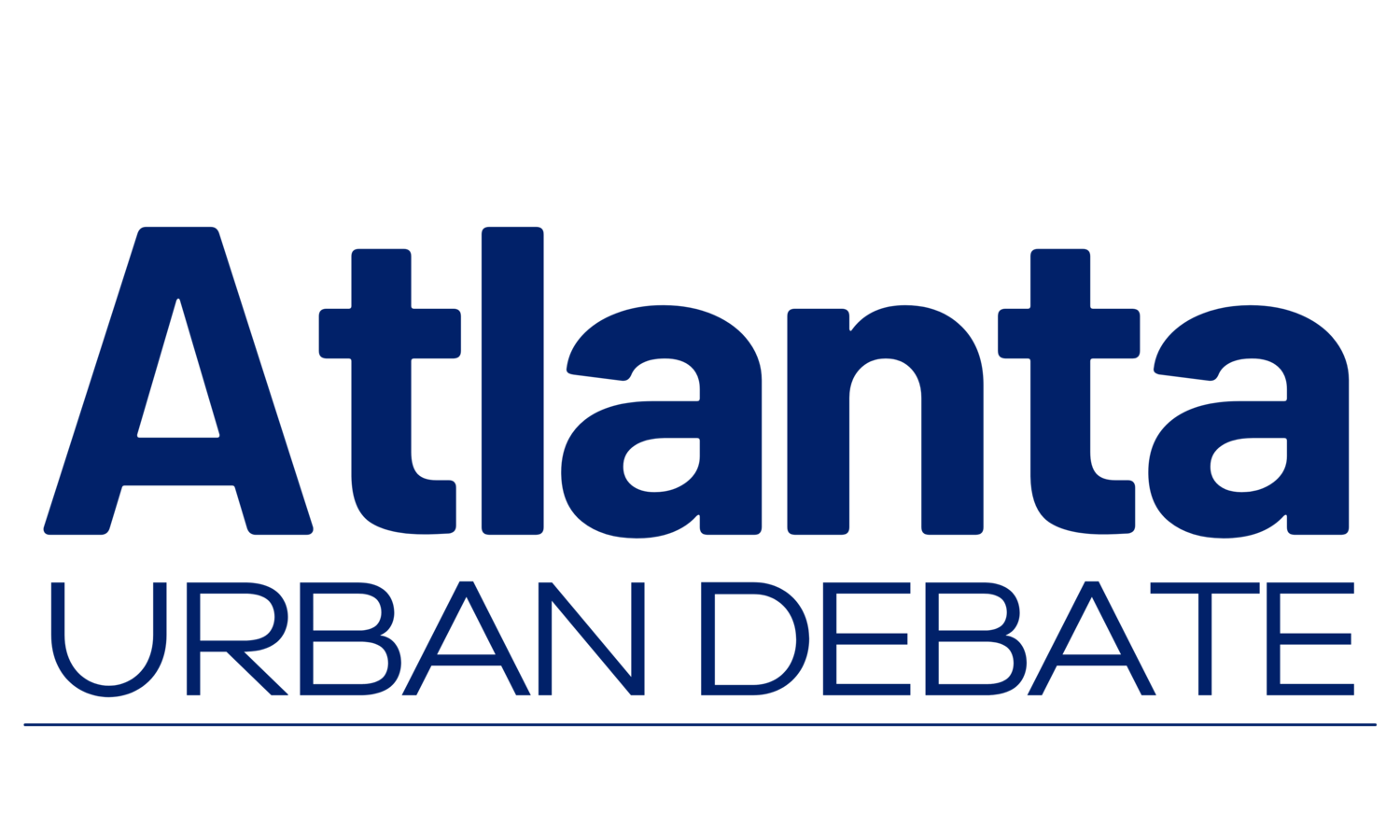The Atlanta Urban Debate League is committed to providing excellent debate education programs, services, and opportunities to diverse students, educators, and members of the community!
First Speeches: Bad Speaking Contest
Learning Objectives
Identify common public speaking errors.
Identify public speaking best practices.
Deliver speeches from prepared notes.
Time Needed
~30-45 min.
Resources & Materials
Paper (2-3 sheets per student)
Pencil/pen (1 per student)
Teacher Preparation
Review principles of effective public speaking, using the AUDL curriculum/video resources.
Lesson Outline
- Bad Speaking Contest
- To begin, divide students into groups. Each group will deliver at least one brief (1-2 minute) speech, so adjust group size/ number of groups based on the time available.
- Explain that each group will participate in a public speaking contest with a twist: The group that delivers the worst speech will win.
- Ask each group to select a representative to deliver the speech. Once a representative has been selected, give each group a short period of time to prepare their “bad” speech on a topic of your choice.
- Once the speeches are prepared, ask the representative of each group to deliver his or her “bad” speech to the whole squad.
- After all speeches have been delivered, let students vote for the “worst” speech. The group whose speech receives the most votes wins the contest!
- Reflection
- After the contest, ask students to justify how they voted. Use the ensuing responses to create a “worst practices” list of things that students SHOULD NOT do while speaking.
- Once the list of “worst practices” is complete, lead students in a discussion of “best practices” by asking them to identify the opposite of each item on the “worst practices” list.
- "Improved" Speaking Contest (Optional)
- If time permits, ask each group to revise its speech, and hold a new, more traditional public speaking contest. This time, the group that delivers the best speech will win.
- Once the contest is complete, and students have voted for the best speech, ask each student to explain their vote. Using those responses, lead a discussion about best practices in public speaking.
Points of Improvement
Speeches do not fill the allotted time.
“Bad” speeches rely on one or two gimmicks.
“Improved” speeches do not follow good public speaking practices.
Signs of Mastery
Students deliver clear, full-length speeches that follow the chosen topic.
Instructor Notes
“Bad” speeches often rely on one or two gimmicks (e.g., barking like a dog). Ask students to diversify their strategy.
Students may get caught up in the “humor” of the activity. Set a mature tone for the post-contest discussion.
